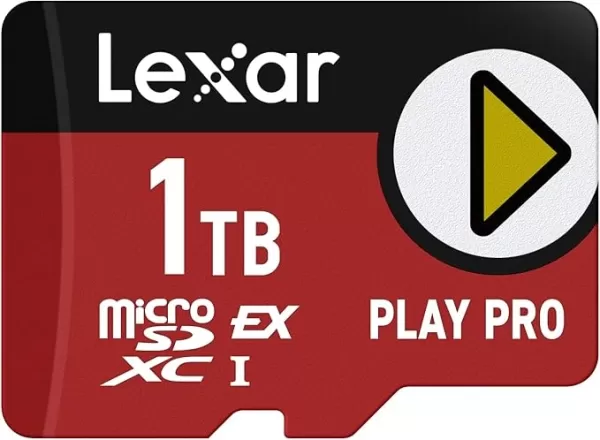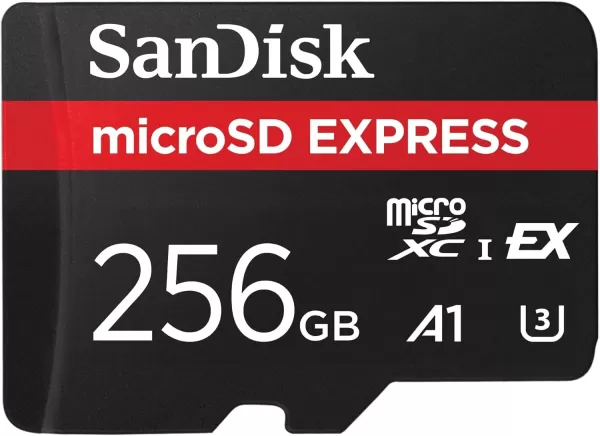MicroSD Express: Why Nintendo Switch 2 Needs It
Last week, Nintendo unveiled the highly anticipated Nintendo Switch 2, revealing that the console will exclusively support expansion through MicroSD Express cards. This decision might be inconvenient for those with collections of existing MicroSD cards, but it's a strategic move that promises significant performance benefits. MicroSD Express cards boast speeds that rival the Universal Flash Storage (UFS) used in the Switch 2's internal storage, ensuring that games installed on these cards can load just as quickly as those stored internally. This comes at the cost of compatibility with older, slower MicroSD cards, but the potential for enhanced gameplay makes it a worthwhile trade-off.
MicroSD vs. MicroSD Express
Over the years, MicroSD cards have evolved through six different speed ratings, starting from the initial SD cards with a speed of 12.5MB/s, which is slow by today's standards. The progression continued with SD High Speed at 25MB/s, culminating in SD UHS III (Ultra High Speed) at 312MB/s. However, the game-changer came five years ago with the introduction of the SD Express standard, which significantly boosted speeds.
The key difference with SD Express is its use of a PCIe 3.1 interface, a stark contrast to the slower UHS-I interface of traditional SD cards. This PCIe interface is the same technology that powers faster NVMe SSDs, unlocking much higher performance potential. Full-sized SD Express cards can achieve data transfer speeds up to 3,940MB/s, a monumental leap from older SD cards.
While MicroSD Express cards don't reach the peak speeds of their full-sized counterparts, they still offer impressive performance, with speeds up to 985MB/s—three times faster than the fastest non-Express MicroSD cards.
Why Does the Switch 2 Require MicroSD Express?
Although Nintendo typically keeps its hardware decisions under wraps, the rationale behind requiring MicroSD Express cards for the Switch 2 is clear: speed. Games installed on a MicroSD Express card will load significantly faster than those on a traditional UHS-I MicroSD card, thanks to the PCIe 3.1 interface. This requirement could set a precedent for future handheld gaming PCs.
The internal storage of the Nintendo Switch 2 has been upgraded to UFS from eMMC, aligning with the need for expansion storage to match these speeds. Early demos suggest that load times for games like Breath of the Wild have improved dramatically, with fast travel load times reduced by 35% according to Polygon, and initial load times improved by a factor of three as reported by Digital Foundry. These improvements could be attributed to the faster internal storage, but also to the enhanced CPU and GPU, which can process data more efficiently. The bottom line is that Nintendo needed its external storage to keep pace, ensuring that future games requiring faster storage aren't hindered by slower SD cards.
Moreover, this move paves the way for even faster storage solutions in the future. The current fastest standard for SD cards, SD 8.0 Specification, allows full-size SD Express cards to reach speeds up to 3,942MB/s. While MicroSD Express cards can't yet match these speeds, future advancements could see them doing so, provided the Nintendo Switch 2 supports such high speeds.
MicroSD Express Capacity Options
MicroSD Express cards have been slow to gain traction, but the launch of the Nintendo Switch 2 is expected to change that. Currently, options are limited. Lexar offers a single MicroSD Express card in 256GB, 512GB, and 1TB variants, with the 1TB model priced at $199.

Lexar Play Pro MicroSD Express
0See it at Amazon
SanDisk, on the other hand, has one MicroSD Express card available, topping out at 256GB, which matches the internal storage capacity of the Switch 2. As the Switch 2 hits the market, we might not see many MicroSD Express cards with capacities exceeding 512GB. However, this is likely to change as companies like Samsung ramp up production of these high-speed memory cards.

SanDisk MicroSD Express 256GB
0See it at Amazon




























